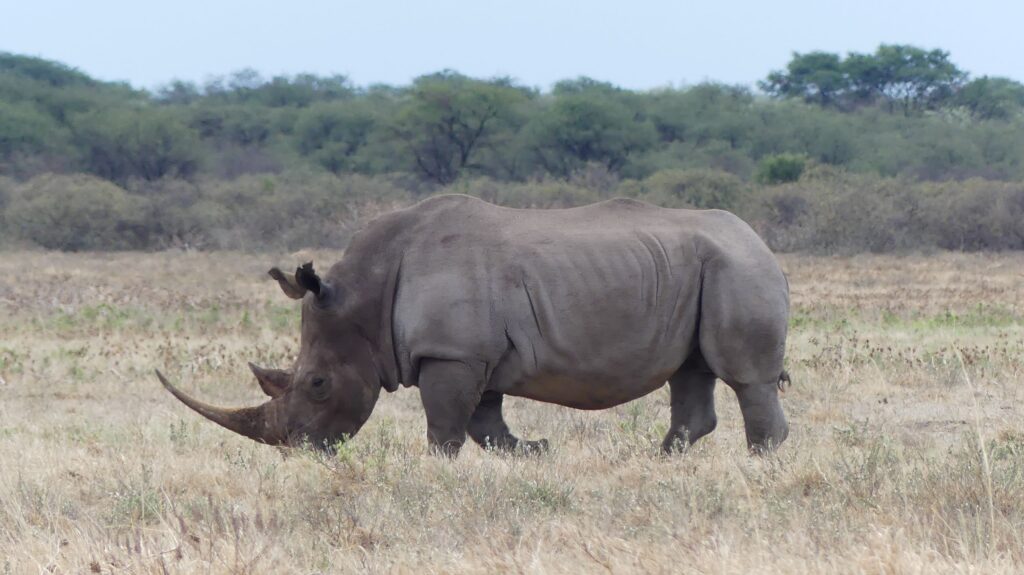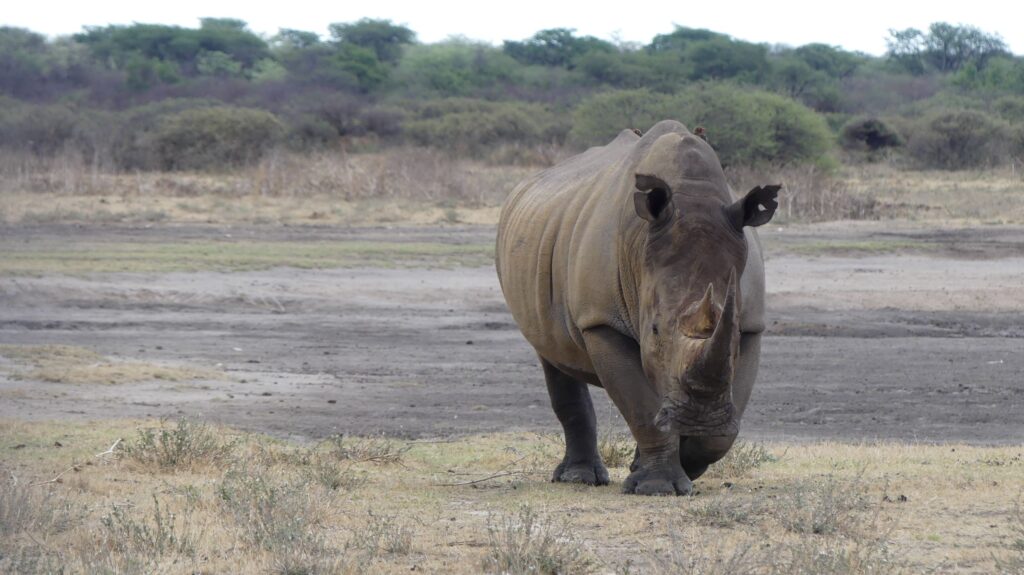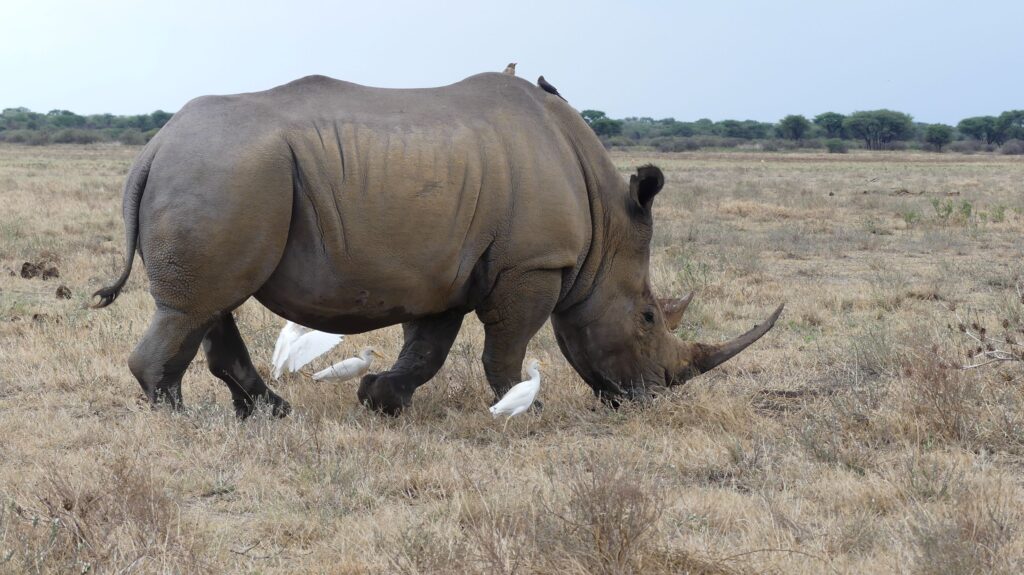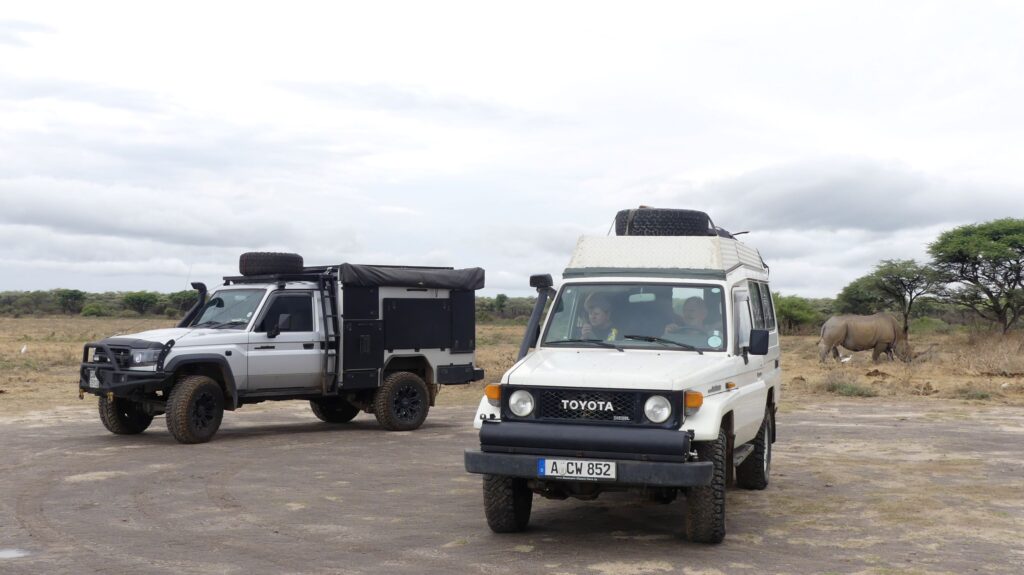Wir verlassen den Tuli-Block Richtung Westen, unsere nächste Station ist das Khama Rhino Sanctuary. Hier ist aus einer lokalen Initiative ein Schutzgebiet für Nashörner entstanden. Waren es vor knapp 30 Jahren nur fünf Tiere, leben dort heute 60 Breit- und Spitzmaulnashörner. Deren Schutz gelingt deshalb so gut, weil in der Nachbarschaft eine Kaserne der botswanischen Armee ist und die Soldaten die Nashörner rund um die Uhr überwachen. Und für sie gilt wie überall in Botswana die Devise beim Kontakt mit potenziellen Wilderern: Erst schießen, dann fragen.
Beim Eingang wird uns eingeschärft, nie näher als 50 Meter an die Wildtiere heranzufahren. Schließlich sind die 3 Tonnen schweren und bis zu 50 km/h schnellen Tiere wild und gefährlich. Was macht man aber, wenn das Nashorn sich nicht an diese Regel hält? Ein Exemplar kommt langsam, aber sicher auf uns zu. Bleibt erst weniger als 10 Meter vor uns stehen. Vor dem geistigen Auge läuft ein Film ab, in dem das Nashorn dreimal mit dem rechten Vorderhuf scharrt und dann mit gesenktem Kopf auf Toyo zurennt. Eine Autotüre wäre für das Horn des Kolosses sicherlich kein Hindernis. Wir vermeiden jedes Geräusch und stellen die Atmung ein. Denn Nashörner sehen zwar schlecht (vielleicht musste es deshalb so nah herankommen), hören aber sehr gut. So stehen wir einige Minuten Auge in Auge: 3 Tonnen Nashorn und 3 Tonnen Toyo. Minute um Minute verrinnt. Dann entscheidet sich das Tier für die friedliche Lösung, macht gemächlich einen Bogen um unsere Autos und setzt seinen Weg dahinter dann wieder fort. Wir standen einfach im Weg. Einmal tief durchatmen …




We leave the Tuli Block heading west, our next stop is the Khama Rhino Sanctuary. A local initiative has created a sanctuary for rhinos here. While there were only five animals here just under 30 years ago, today there are 60 white and black rhinos living here. Their protection is so successful because there is a Botswana Army barracks in the neighborhood and the soldiers monitor the rhinos around the clock. And, as everywhere else in Botswana, their motto when dealing with potential poachers is: shoot first, ask questions later. …
At the entrance, we are warned never to drive closer than 50 meters to the wild animals. After all, these animals weigh 3 tons and can reach speeds of up to 50 km/h. They are wild and dangerous. But what do you do when the rhino doesn’t follow this rule? One specimen is slowly but surely approaching us. It stops less than 10 meters in front of us. A movie plays in our minds, in which the rhino scrapes the ground three times with its right front hoof and then runs toward Toyo with its head lowered. A car door would certainly be no obstacle for the horn of this colossus. We avoid making any noise and hold our breath. Rhinos may have poor eyesight (which is perhaps why it had to come so close), but they have very good hearing. So we stand eye to eye for a few minutes: 3 tons of rhino and 3 tons of Toyo. Minute after minute passes. Then the animal decides on a peaceful solution, leisurely circles around our cars and continues on its way behind them. We were simply in the way. Take a deep breath…
Schreibe einen Kommentar zu Johannes Baillou Antwort abbrechen